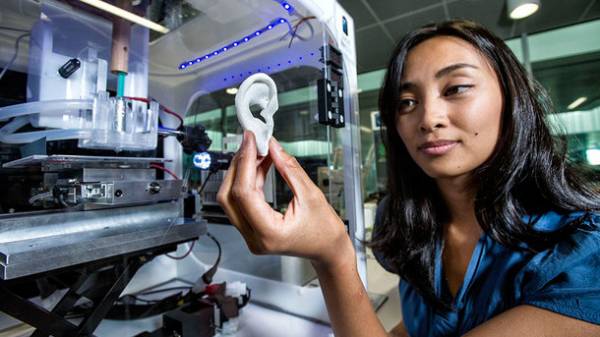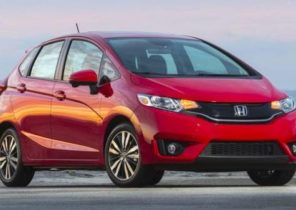
Technology in the world developed by leaps and bounds, but the rapid growth in the areas most vulnerable to humanity. So, China, which is accused of environmental degradation on the planet, began to build skyscrapers with greenery on the roof and even on the walls. In order to relieve the roads and thereby reduce emissions, companies are implementing an autopilot for trucks, and to provide the world a cheap and environmentally safe food (cattle ranching on an industrial scale significantly increases the amount of methane that Deplete the ozone layer), scientists are trying to reduce the cost of meat grown in bioreactors. Also in different countries in parallel, studies are being conducted which will allow to grow in the laboratory and to print to printers the bodies that are ideally suited to each patient. Basic trends of business and technology in the world learned Today.
Health: medicines and organs
To be healthy is easier: medication can be printed on the printer at home and the transplant will be “laboratory” bodies, and not taken from other people. At least, such technologies already exist — they only have to develop and reduce the cost.
TESTS. There were devices that enable to diagnose without the usual tests. Scientists at Texas University (USA) have developed a breathalyzer: it diagnose influenza at an early stage and works like a breathalyzer. The device is equipped with sensors for the determination of ammonia and nitric oxide, which detects the “flu” biomarkers. Soon he will get replacement sensors for detection of diabetes. The novelty can be bought in a pharmacy, and the resultant data is sent to the doctor. A Belgian company BeWell suggested to use for the primary examination of the WellPoint kiosk. For avtomobilestroenie you just have to stick your hand in a meter. In three minutes, the kiosk measures blood pressure, pulse and weight. Even WellPoint will do blood tests. The service costs $8000 per year.
PRINT. Actively used in medicine and 3D technology. FabRx British company has developed a 3D printer that can print drugs at home. However, it is necessary to procure drugs.
Scientists at the heart Institute of Australia has developed a bio-printer to print heart cells: doctors take skin cells of the patient, stem cells, turn them into heart cells. Tissue is administered to a patient instead of a damage after a heart attack, providing the heartbeat, the pumping of blood.
The Chinese company Sichuan Revotek tested printed vessels using biochemica from stem cells. The material was taken from the donor printed vessels were placed in the body of monkeys. After 5 days the vessel was formed a layer of endothelium, a month — a layer of smooth muscle cells. Now vessels as a family.
To accelerate adoption of 3D printing in medicine in Australia open Institute bio-industries. Scientists will print materials for individual surgical implants. We also plan to print organs from patient’s cells. This will eliminate for the implantation of tissue rejection of the cells by the body.
Ecology: forest on a skyscraper and armored packs
The environmental issue remains the priority of developers around the world. Now in the Chinese city of Nanjing, laying the Foundation for the two green skyscrapers, with a height of 200 and 108 m, within which he will have offices, and outside the forest. And the woods in the literal sense: it is placed 900 large trees and 1000 shrubs! The project Vertical Forest will help in cleaning the air, because plants consume 25 tons of carbon dioxide and produce 60 kg of oxygen per day. The pilot will conclude in 2018.
And in Germany company Green City Solutions invented CityTree: “tree” (height 4 m, width 3 m) consists of solar panels and irrigation system. It grows on a rare moss, where bacteria live, struggling with harmful substances. One such panel replaces the 275 trees, it is set in Berlin, Oslo and Paris.
In Egypt not far behind: bioengineers from the University of Nottingham, Neil is interested in the shell of the shrimp and decided that he would make great packs! The chitosan is treated with acid and alkali for removal of calcium carbonates and giving him cotton. This biopolymer will replace plastic bags.
Test-tube meat: coming soon on all the shelves
First Burger with a Patty of lab meat produced in 2013, and then its cost was $325 thousand. But the technology is constantly improved: now the same Burger costs $11, but scientists promise and even cheaper meat. Make it with blood serum, because no animal in the production does not suffer. In the bioreactor of the cells formed muscle: this is the basis of meat. The developers plan after 5 years to sell meatballs, steaks and Breasts of the tubes.
Comfortable: the wheelchair on autopilot
Technology of autopilot are getting smarter, and they can already be implemented in areas where they are most needed. This year in Singapore’s hospitals appear hospital wheelchair, equipped with an autopilot, computer vision and machine learning system. The aim of the project is to help the elderly and disabled, and to release nurses from the obligation to carry patients in wheelchairs. The latter is particularly important: improving the quality of life of people in the country began to live much longer, and nurses to care for the elderly is not enough.
In addition, Singapore launched another interesting project: Toyota and Scania will hold the first full-scale test of a convoy of trucks on the autopilot. Within 3 years, a convoy of 3 trucks will deliver the goods in automatic. Such trucks in the future will help to optimize road traffic and relieve the road, according to the authors of the project.
Life: liquid glass for mobile and tablets
Technology is developing rapidly, and especially actively implemented in the areas with billions in turnover, namely in the market of mobile devices. So, startup ProtectPax proposes to use to protect glass, smartphones or tablets liquid coating based on titanium, which protects the device from bumps, scratches and water. ProtectPax material consists of nanoparticles of titanium dioxide and fills in the microscopic grooves on the screen, protecting it from mechanical damage. The effect of the coating lasts about a year, the cost is still unknown.
To be a success, according to the forecasts of developers, and startup MotherBox that charges multiple devices at a distance. Its action is reminiscent of the work of the Internet router and is based on the phenomenon of electromagnetic induction. The developers have modified the device, and the receiving circuit to increase the range. Now MotherBox can be delivered in any point of the room, and the charge of the gadget is automatic. For this you need to put the phone in a special receiving circuit, which, previously, will look like the case.
The sun take possession
The sun’s rays become a serious competitor to coal and gas. Swiss scientists have invented a method of preservation of heat of the sun as humanergy to heat their houses. The device consists of a tank with a solution of lye/water and a module for charging/discharging heat. During charging of the energy goes into the device and stored years! The heat capacity of the solution is 5 times higher than that of boiling water, so the huge tank storage is not needed. And in Melbourne, Australia transferred 400 of the longest tram network in the world (250 km) to the energy of nature: for powering transportation are building solar power plants and close coal.







